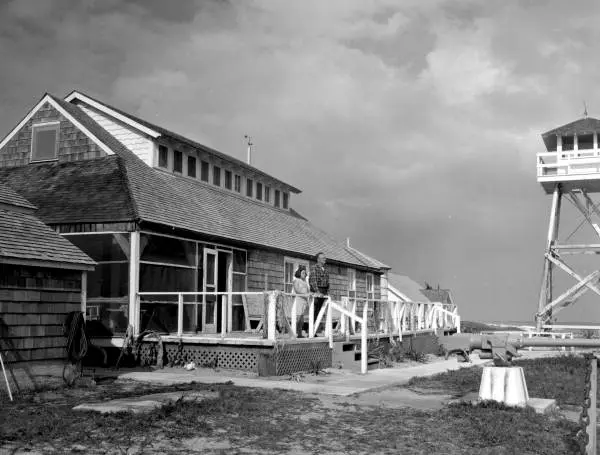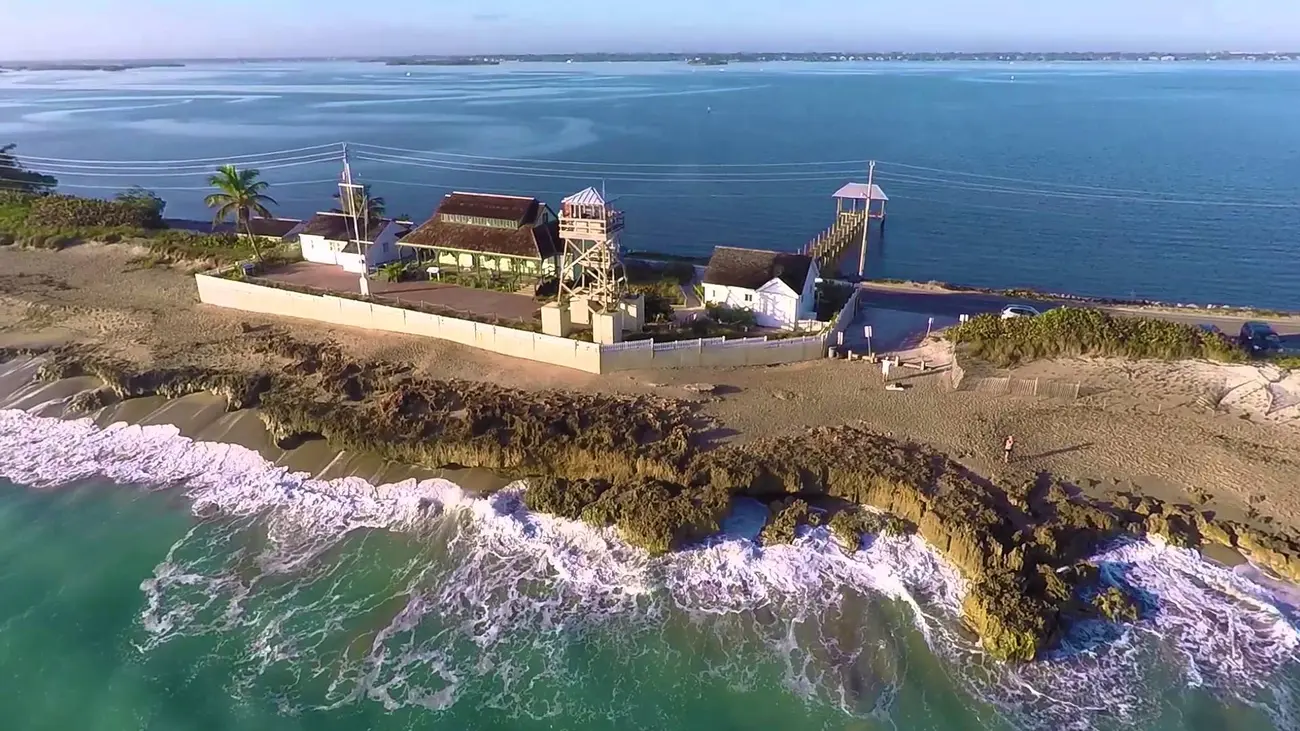Imagine you are on a boat traveling south along Florida’s east coast. A brief but violent storm hits and your boat sinks. You manage to swim to shore. Exhausted from fighting with the sea and believing you are now safe, you fall asleep on the beach.
When you wake up, you realize your ordeal has just begun.
The hot Florida sun has already burned your skin. You are covered with bites from sand fleas and mosquitoes. You stumble inland to find undeveloped scrubland as far as the eye can see, and no source of fresh water in sight.
It’s the late 1800s, and the entire population of Florida is less than 270,000 people.
Luckily for you, one of those people is the keeper of a remote House of Refuge, and he is patrolling the shoreline nearby. He will find you soon, and take you to safety.
Ten Houses of Refuge were built by the U.S. Life Saving Service between 1876 and 1886 to help shipwreck survivors. They were exclusively built in Florida.
Sandra Thurlow has written a series of books about the history of the Indian River region of Florida, including “Gilbert’s Bar House of Refuge: Home of History.” Her new book, co-authored with Timothy Dring, is “U.S. Life Saving Service: Florida’s East Coast.”
“It’s surprising how sparsely it was populated,” says Thurlow. “They called it ‘a howling wilderness,’ especially the lower east coast. So when shipwrecks happened, the survivors usually came to shore and got to survive that far, but then their life was in question because there was no way to find civilization to get food or water, and they didn’t know which way to go. So after storms, keepers of the Houses of Refuge would walk in either direction, and look for survivors.”
Sumner Increase Kimball led the U.S. Life Saving Service from its creation in 1871, until it merged with the U.S. Revenue Cutter Service in 1915, to form the U.S. Coast Guard. Under Kimball’s direction, the activities of the Houses of Refuge were well documented.
“He was a brilliant bureaucratic supervisor,” says Thurlow. “There’s voluminous paperwork surviving.”
While written records for the Houses of Refuge are plentiful, photographs are not. Thurlow and Dring managed to assemble hundreds of photographs for their book from a variety of sources.
“Each one is precious,” Thurlow says.
Of the 10 built, Gilbert’s Bar House of Refuge in Stuart is the only one still standing. It’s on the National Register of Historic Places and is preserved as a museum.
“Coincidentally, the most exciting time ever in a House of Refuge was right there, at Gilbert’s Bar,” says Thurlow. “In October, 1904, there were two shipwrecks back to back. There were 22 men put up in the House of Refuge as a result of those shipwrecks. There were quite a few casualties involved. One (of the shipwrecks) has become an underwater archaeological site right off of the Gilbert’s Bar House of Refuge. People dive on it, and on a calm day you can see a bit of the wreckage from the House of Refuge porch. Two ships, the Georges Valentine and the Cosme Calzado wrecked within 24 hours.”
Shipwrecks didn’t happen every day, of course. The Houses of Refuge were mostly occupied by the families of the keepers, and daily life could be slow paced. Thurlow tells many stories of individuals associated with the Houses of Refuge, but her favorite is about a shipwreck survivor named Axel Johansen.
“He was Norwegian and he was in a shipwreck off of Chester Shoal House of Refuge,” says Thurlow. “He washed ashore with little life left in him. He passed out as soon as he got to the sand. Two daughters of the House of Refuge came and discovered him, and told their parents, and they nursed him back to health. He went back to Norway. It was the days of sailing ships dwindling, and his life had changed. He remembered Florida and the good reception and care he got on Cape Canaveral, and he came back and married one of the daughters.”
After World War II, Florida’s coastline was becoming much more populated, and the Houses of Refuge went out of service.

